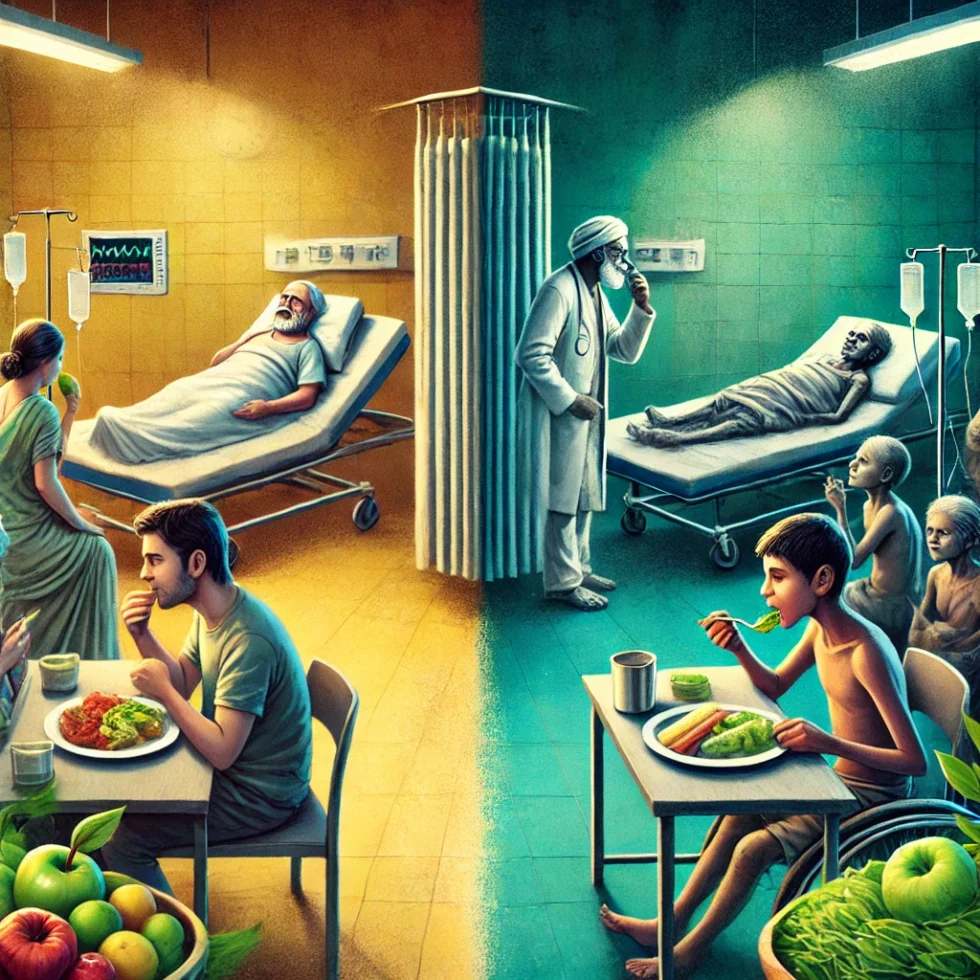
In a country where a significant portion of the population struggles to meet basic needs, health often takes a backseat. The perception that maintaining good health is a luxury rather than a fundamental right is shaped by various socio-economic, cultural, and environmental factors. This blog explores the reasons behind this phenomenon and its impact on individuals and society, while also suggesting solutions to make health more accessible for everyone.
Limited Access to Healthcare
One of the primary reasons health is viewed as a luxury in India is the lack of access to quality healthcare. Rural areas, in particular, suffer from inadequate health facilities, with many lacking even basic medical services. People in these areas often have to travel long distances for medical attention, which discourages preventive healthcare and early treatment.
In urban areas, while healthcare infrastructure is better, the high cost of private medical care makes it unaffordable for many low- and middle-income families. The burden of expensive hospital bills and medications forces many to ignore their health concerns until they become severe. As a result, people prioritize immediate survival over long-term well-being, reinforcing the idea that good health is a privilege rather than a right.
The Rising Cost of Nutritious Food
Despite India’s vast agricultural resources, access to nutritious, high-quality food remains a challenge. Many families opt for cheaper, processed foods that are high in sugar, unhealthy fats, and artificial additives. This dietary shift has contributed to a rise in lifestyle-related diseases such as obesity, diabetes, and heart disease.
The affordability crisis surrounding healthy food contributes to the idea that maintaining good health is a privilege for those who can afford organic produce, high-quality protein sources, and fresh fruits and vegetables. Government intervention is needed to subsidize healthy food options, promote sustainable farming practices, and raise awareness about affordable, nutritious diets.
The Urban Lifestyle Dilemma
City life presents its own set of challenges that make maintaining a healthy lifestyle difficult. Long working hours, high stress levels, and limited time for self-care often lead to unhealthy eating habits, lack of sleep, and sedentary lifestyles. The pressure to meet professional and financial goals leaves little room for regular exercise or proper nutrition.
While fitness centers and gyms are available in urban areas, the cost of memberships can be prohibitive for many people. Public parks and community sports facilities are often underdeveloped or overcrowded, making it difficult for the general public to engage in physical activity. The struggle to balance work and health further reinforces the idea that a healthy lifestyle is an exclusive privilege rather than a fundamental necessity.
Cultural Attitudes Towards Health
Traditional Indian diets, while rich in nutrients, often rely heavily on carbohydrates and fats. Lack of awareness about the importance of a balanced diet and portion control contributes to poor eating habits. Many people in India associate good health with external appearance rather than internal well-being, leading to a lack of focus on preventive healthcare.
Mental health remains another neglected aspect of well-being in India. Despite increasing awareness, mental health issues are still stigmatized, preventing many from seeking professional help. People are often expected to “be strong” rather than acknowledge their struggles, further worsening their condition. By prioritizing overall well-being, including mental and emotional health, Indian society can foster a more holistic approach to healthcare.
The Influence of Social Media and Consumerism
Social media has created unrealistic expectations regarding health and fitness. Influencers and celebrities frequently promote expensive health foods, exclusive fitness programs, and luxury wellness retreats. This portrayal of health as something attainable only with wealth fosters a sense of inadequacy among those who cannot afford such lifestyles.
Moreover, many trending diets and workout plans promoted online are not sustainable or scientifically backed, leading to misinformation about what constitutes a genuinely healthy lifestyle. Instead of focusing on expensive solutions, the emphasis should be on accessible and practical wellness strategies that anyone can adopt.
The Consequences of Viewing Health as a Luxury
When health is treated as a privilege rather than a basic right, inequality deepens. Those with fewer resources suffer from preventable illnesses, increasing the burden on the already overstretched healthcare system. Poor health outcomes also impact economic productivity, as an unhealthy workforce cannot contribute effectively to society.
If this trend continues, India will face a dual burden—on one hand, rising cases of non-communicable diseases due to poor lifestyle choices, and on the other, an overburdened healthcare system unable to cater to the growing medical needs of the population.
Making Health Accessible to All
To shift the perception of health from a luxury to a right, India must implement changes at multiple levels:
- Strengthening Public Healthcare: More investment in government hospitals, rural health centers, and affordable health insurance can improve accessibility.
- Affordable Nutritious Food: Subsidizing healthy food and promoting sustainable farming practices can help make nutritious meals available to all.
- Encouraging Physical Activity: Government initiatives should focus on developing parks, cycling tracks, and community fitness programs to encourage exercise without financial barriers.
- Mental Health Awareness: Large-scale campaigns should be launched to de-stigmatize mental health issues and provide accessible counseling services.
- Leveraging Traditional Health Practices: Ayurveda and yoga, when combined with modern medicine, can offer affordable and effective health solutions.
- Workplace and School Health Initiatives: Employers and schools should implement wellness programs, nutritious meal options, and mental health resources to promote a culture of well-being.
Conclusion
A healthy lifestyle should not be a privilege for the few but a fundamental right for all. By addressing affordability, accessibility, and cultural attitudes, India can create an inclusive health-conscious society. Through policy changes, community support, and individual action, we can ensure that good health is within everyone’s reach.
A healthier India is not just an ideal—it is a necessity. What steps do you think we can take to make health more accessible? Share your thoughts in the comments below!





